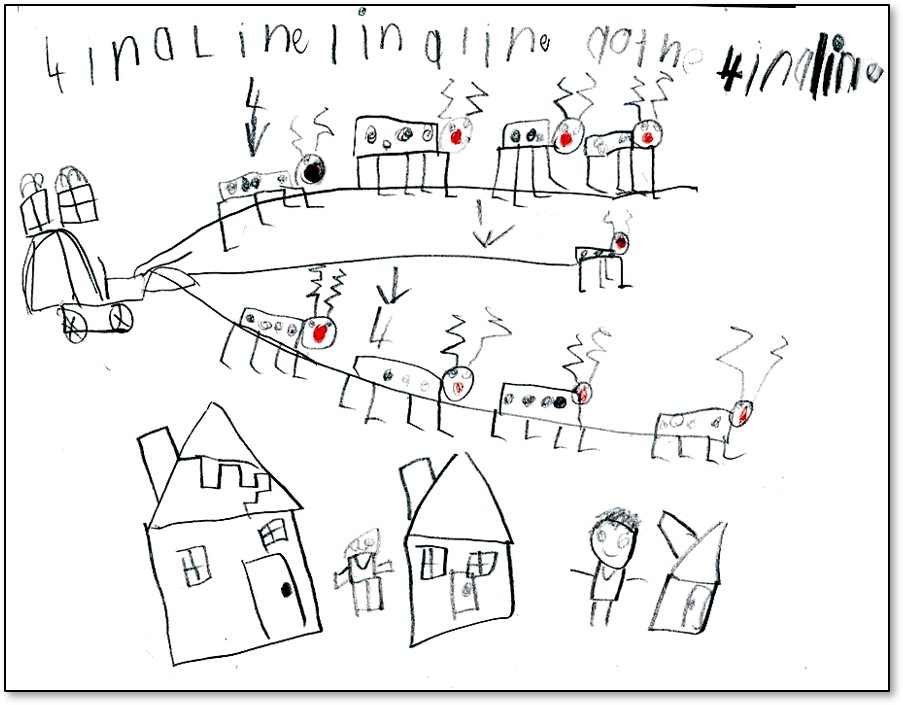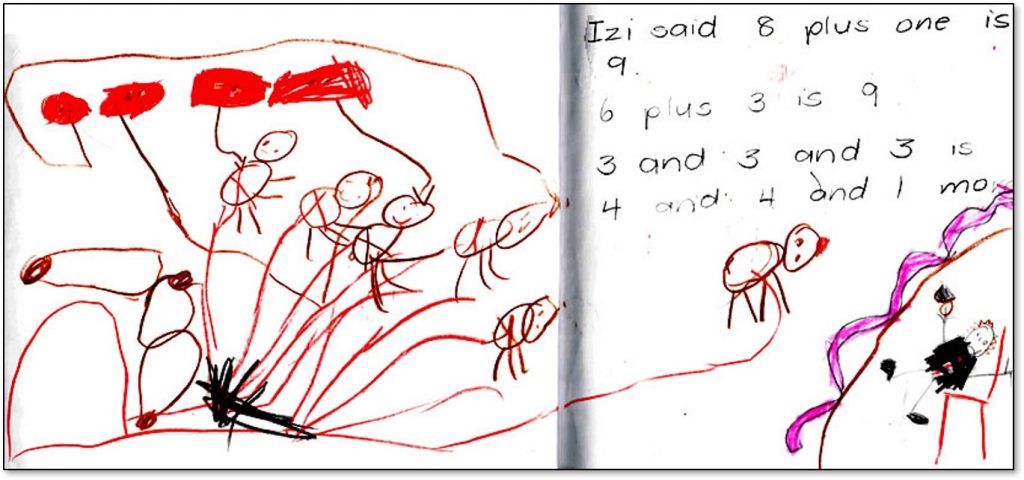Thanks for the Red-nose Solutions
Included in this blog post are some Rudolph’s Red-nose solutions from a reception class.
We so love to receive student responses to the problematized situations that we create, and the following are no exception. These are solutions to the first of our Christmas Specials, that you can download from here.
But before we look at them just a reminder of what is so powerful about problematized situations.
- The Power of Realiseren
This Christmas problem is very topical and students can project themselves into the situation very easily and happily which is what the Dutch mean by the term ‘realiseren’. - The Power of Narrative
We all love a bit of gossip or a good story. Presenting a problematized situation as a narrative promotes chemicals in the brain that enhance learning. cortisol is produced when the story grabs our attention dopamine helps us slick with the story and problem presented oxytocin promotes prosocial and empathetic learning - The Desire to Help
The problematized situations invite students to help (in this case Rudolph) to find solution s to a problem and students really want to help - Appropriate mathematical Content
This open ended problem allows success and challenge for all student. Some students may find any one solution others may find many. Some may draw their solutions and others might use numbers and number sentences.
The Solutions
Sample 1: Invented Graphics.

A lot of detail here and don’t you just love the reindeer? Now look at it closer and see the arrows, 4 in a line, 1 on its own, and 4 more in a line. These arrows are ‘invented graphics’ signifying ‘and’ or ‘add’. Introducing the plus sign now will make sense to the student because they have almost invented it.
Sample 2: Beginning to ‘shorthand’ and ‘skip count!

Much less detail here, heads and red noses only (no bodies or detail) and the multiplicative idea grouping in 3s and skip counting is emerging. What a great place to launch from in a strategy lesson.
Samples 3 and 4: Beginning to Diagram

Notice that all we need now are ‘red noses’ and that they are set out as described in 2 rows of 4 with one more or as 3 rows of 3, almost ready to work without the need of drawings.
Sample 5: Drawings no longer needed.

Notice the teacher annotations. Izzy drew the pictures, perhaps because that is what the others were doing or because she thinks the teacher wants her to. When the teacher asked her to talk about what she was doing, she spontaneously began to cite different solutions that she had thought of, none of which seem to match her drawing. There does come a time when students need to be encouraged to leave the drawings or hands on materials behind if they are no longer needed or moving thinking along as in this case. Of course, they can be fallen back on when the thinking gets tough.
Formative Assessment
We know we are supposed to be finding out what the students do know and can do and then plan accordingly, but most of us have not been trained in the art of formative assessment. I hope that the quick look at these work samples gives dome hints as to what you might be looking for.
If you want to keep learning over the Christmas break, in your bathers next to the pool with a cold glass nearby, why not do the online Problematized Situations course? It will be available soon!
